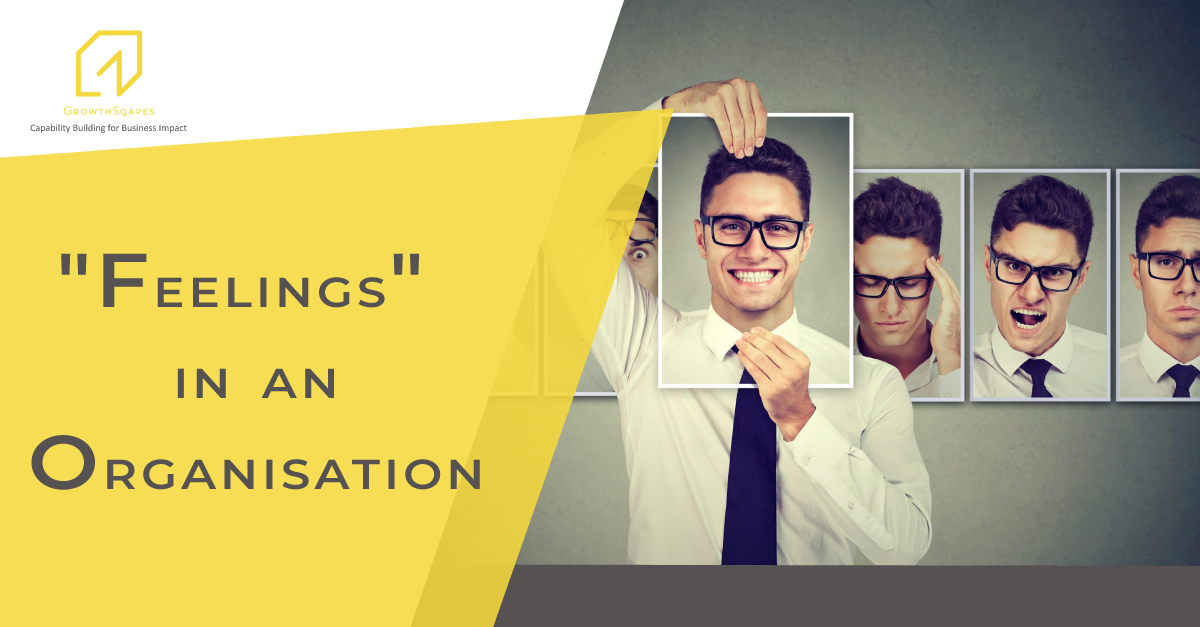“How do you feel about this, how are you feeling?” When was the last time someone asked you this from across the table? And how did that make you feel? As we transition to our work lives from college and navigate through our unique set of challenges, we are always encouraged to think, think, and only think. We are mostly told, “Be rational, be logical, separate emotions from facts, and then take your decisions.” We are also conditioned to not take things personally. Keep our emotions aside.
I remember watching the movie Erin Brockovich, where she is gone for days working on a case, and when she gets back, she is told that she is fired, a big argument follows, and her boss tells her “Don’t take it personally”. She retorts, “not take it personally, that is my time away from my family and you are asking me not to take it personally”. The underlying aspect of this conversation being: we are creatures of emotions and not logic. Our habits and our decisions are all embedded in our emotional universe. Leaders and followers alike.
We have known being emotionally intelligent about ourselves can be such a potent aspect that can help us navigate the unpredictable turns in our lives, events, and tragedies. But do organizations really want to acknowledge that?
Our emotions are always with us. People bring those to the workplace even when they are working from home. The thing is, even though we are at home, emotions, don’t work from home. They follow us and for better or worse are with us till we are there.
We have known for the longest time that emotionally sound leaders are more suited to lead their organizations forward, they are more authentic, more capable to handle stress, and more tolerant toward others. According to: Alison Robins & Nora St-Aubin “ Beyond the leader-employee relationship, emotional dynamics affect our motivation, health, communication, decision making, and more. Yet most of us ignore these emotions. Why is it that when we think of professionalism, we immediately jump to the idea that we should suppress everything we feel?”
As leaders, it is only through our emotional universe, will we emerge being our true selves, and to people around us which would include family, colleagues, and other people. The first aspect of this would be to practice acceptance of these emotions and where they come from. Our anger, sadness, or a mix of these emotions are embedded or triggered in events or aspects of our lives which may need resolution and that will only happen once we accept these emotions in their entirety. According to the Harvard business review article: “Managing Your Emotional Culture”; Before leaving work each day, employees at Ubiquity Retirement & Savings press a button in the lobby. They’re not punching out—not in the traditional sense, anyway. They’re actually registering their emotions. They have five buttons to choose from: a smiley face if they felt happy at work that day, a frowny face if they felt sad, and so on. Organizational climate is the answer to just one question: “How does it feel to work here?”
When people talk about corporate culture, they’re typically referring to cognitive culture: the shared intellectual values, norms, and assumptions that serve as a guide for the group to thrive. Cognitive culture sets the tone for how employees think and behave at work—for instance, how customer-focused, innovative, team-oriented, or competitive they are or should be. Cognitive culture is undeniably important to an organization’s success. But it’s only part of the story. The other critical part is what is called the group’s emotional culture: the shared affective values, norms and assumptions that govern which emotions people have and express at work and which ones they are better off suppressing. Though the key distinction here is thinking versus feeling, the two types of culture are also transmitted differently: Cognitive culture is often conveyed verbally, whereas emotional culture tends to be conveyed through nonverbal cues such as body language and facial expression.
Research over the past decade, has found that emotional culture influences employee satisfaction, burnout, teamwork, and even hard measures such as financial performance and absenteeism. Countless empirical studies show the significant impact of emotions on how people perform tasks, how engaged and creative they are, how committed they are to their organizations, and how they make decisions. Positive emotions are consistently associated with better performance, quality, and customer service—this holds true across roles and industries and at various organizational levels. On the flip side (with certain short-term exceptions), negative emotions such as group anger, sadness, fear, and the like usually lead to negative outcomes, including poor performance and high turnover.
As I write this piece, I am also reflecting on how I feel about this as opposed to how I THINK about this. What emotion does this article attract as opposed to thoughts.
As leaders, the question for us is: can we weave feelings into our conversations, reward and recognition, feedback mechanisms, goal settings, achieving targets… and many more paradigms.
It may have the potential to turn someone’s life around.
How do you feel about this!!
This blog is written by Rupender Khaira, Associate Partner at GrowthSqapes.

